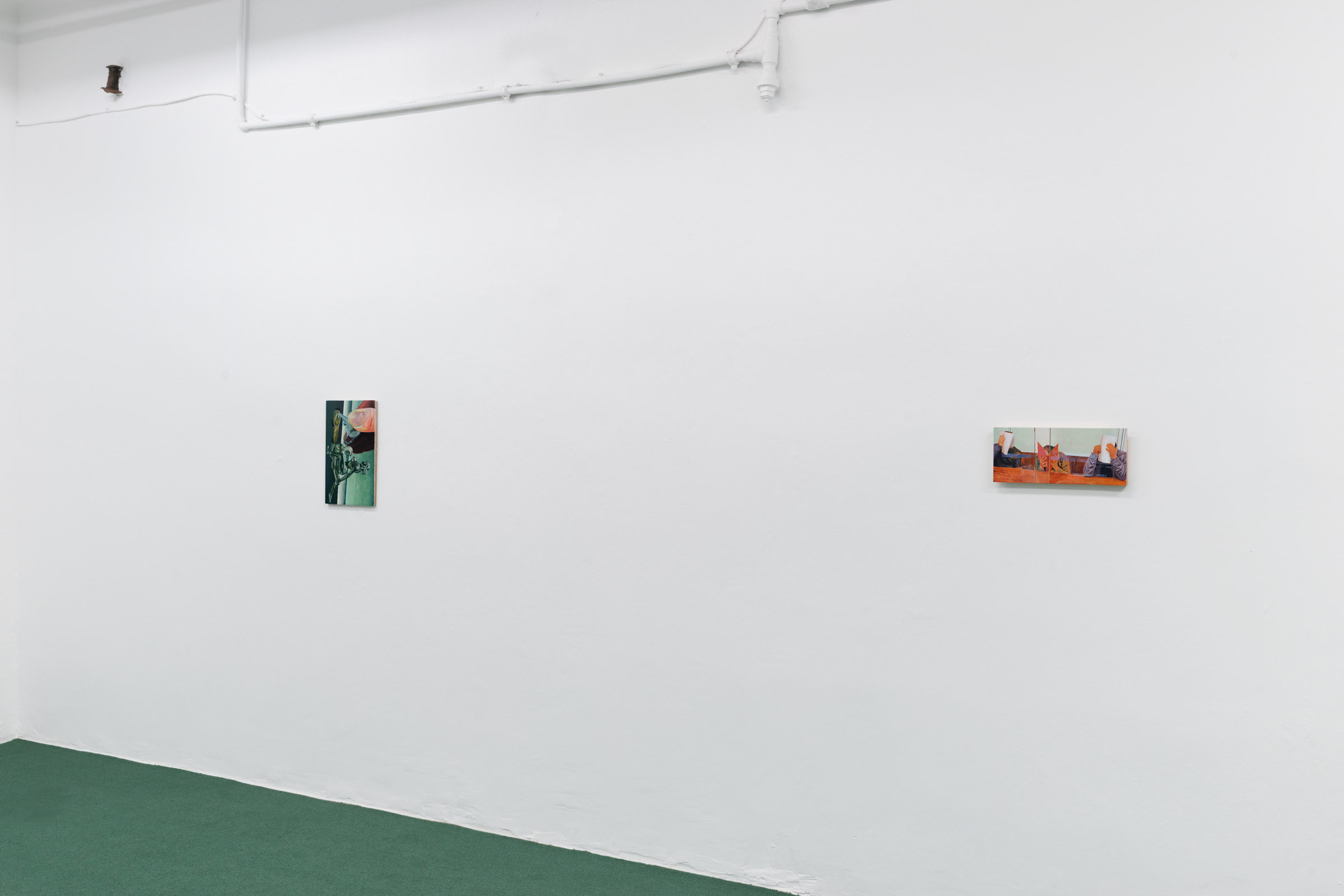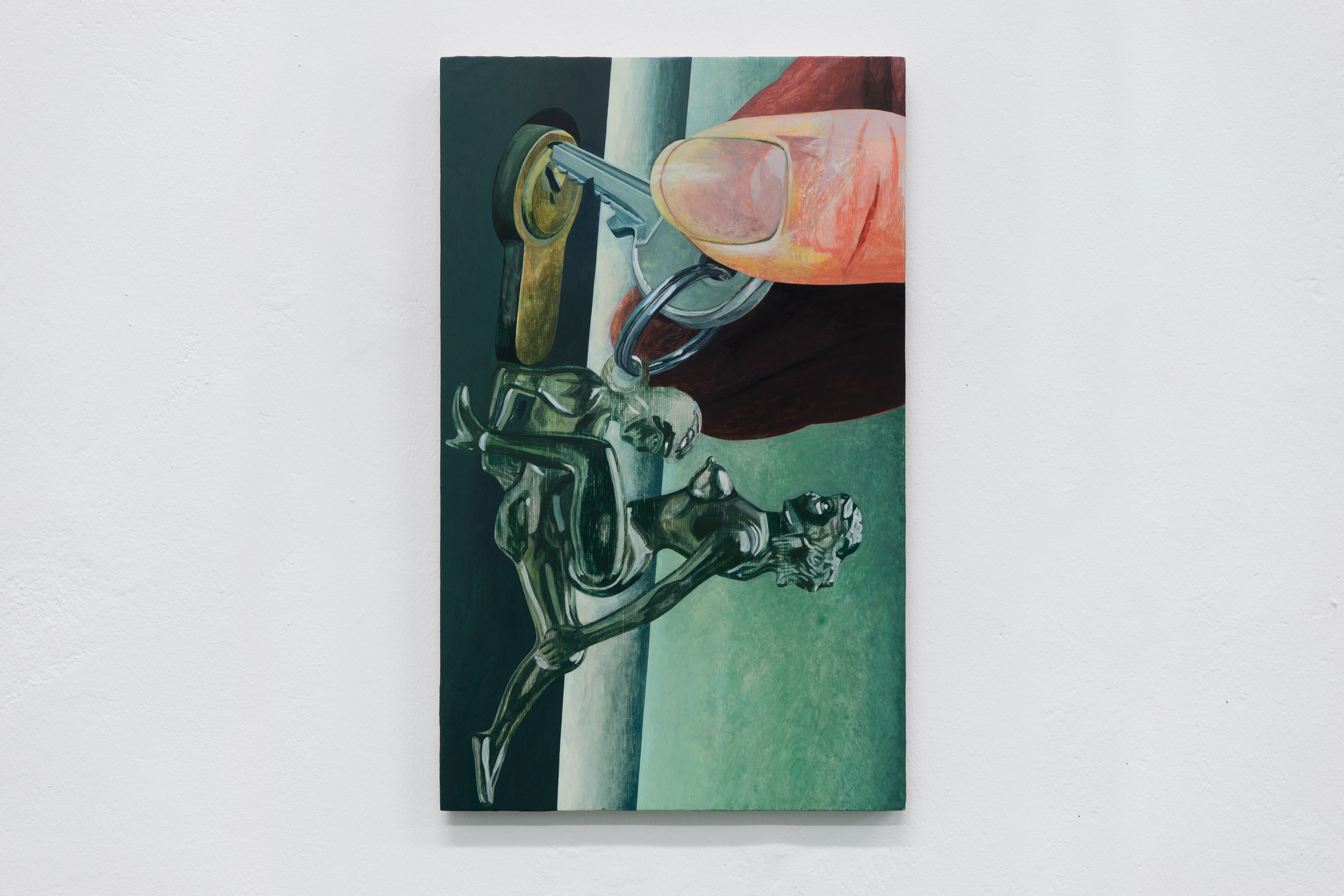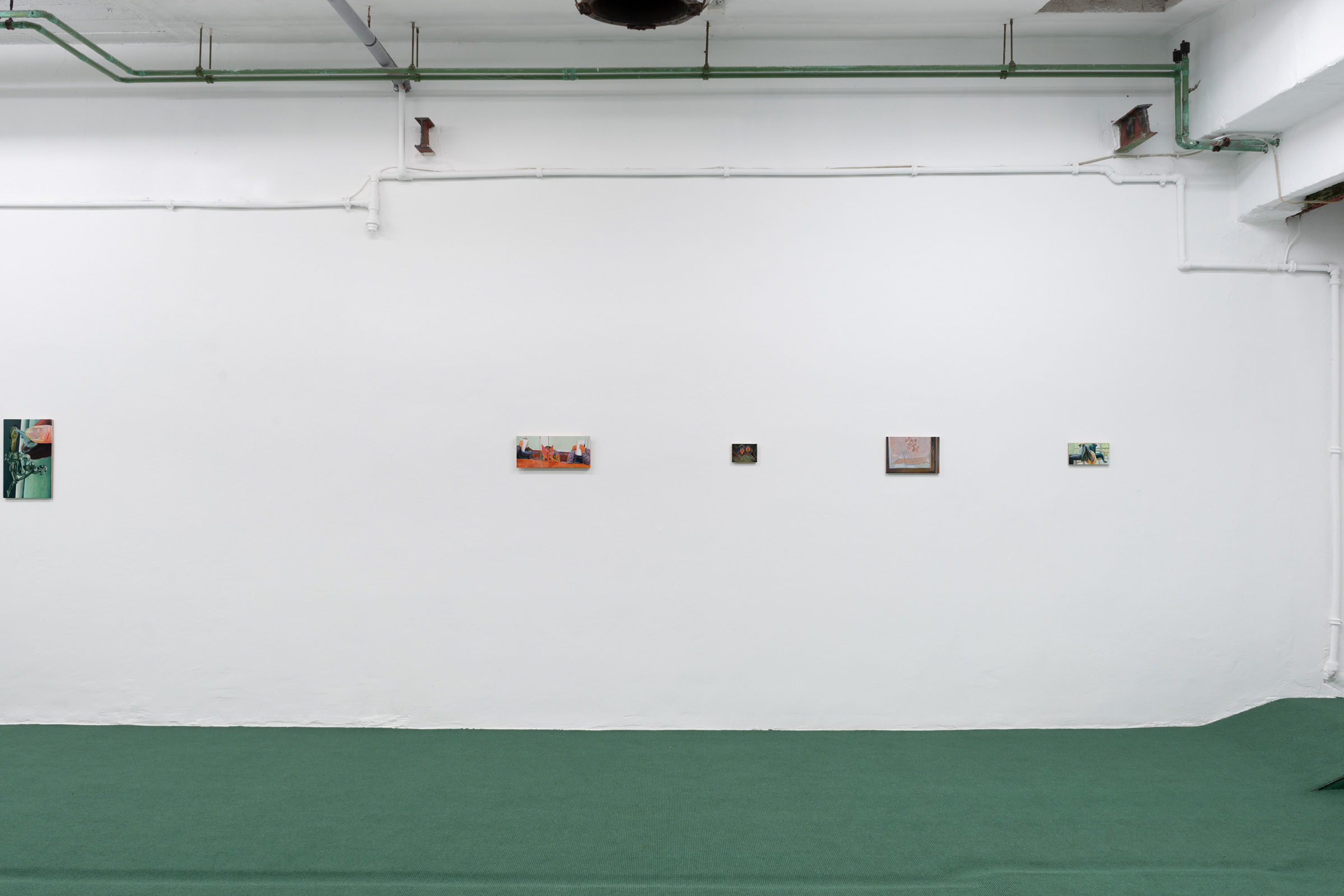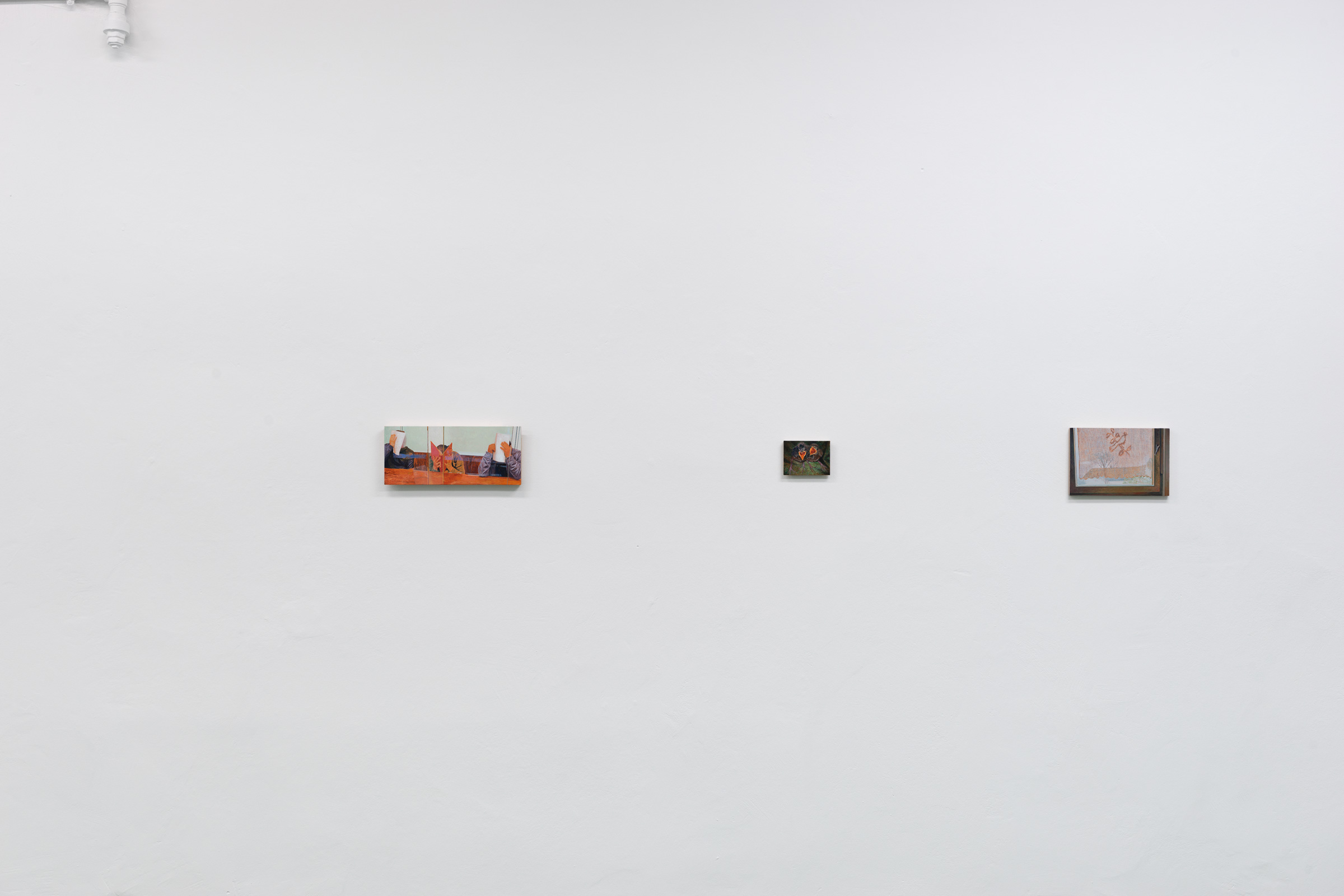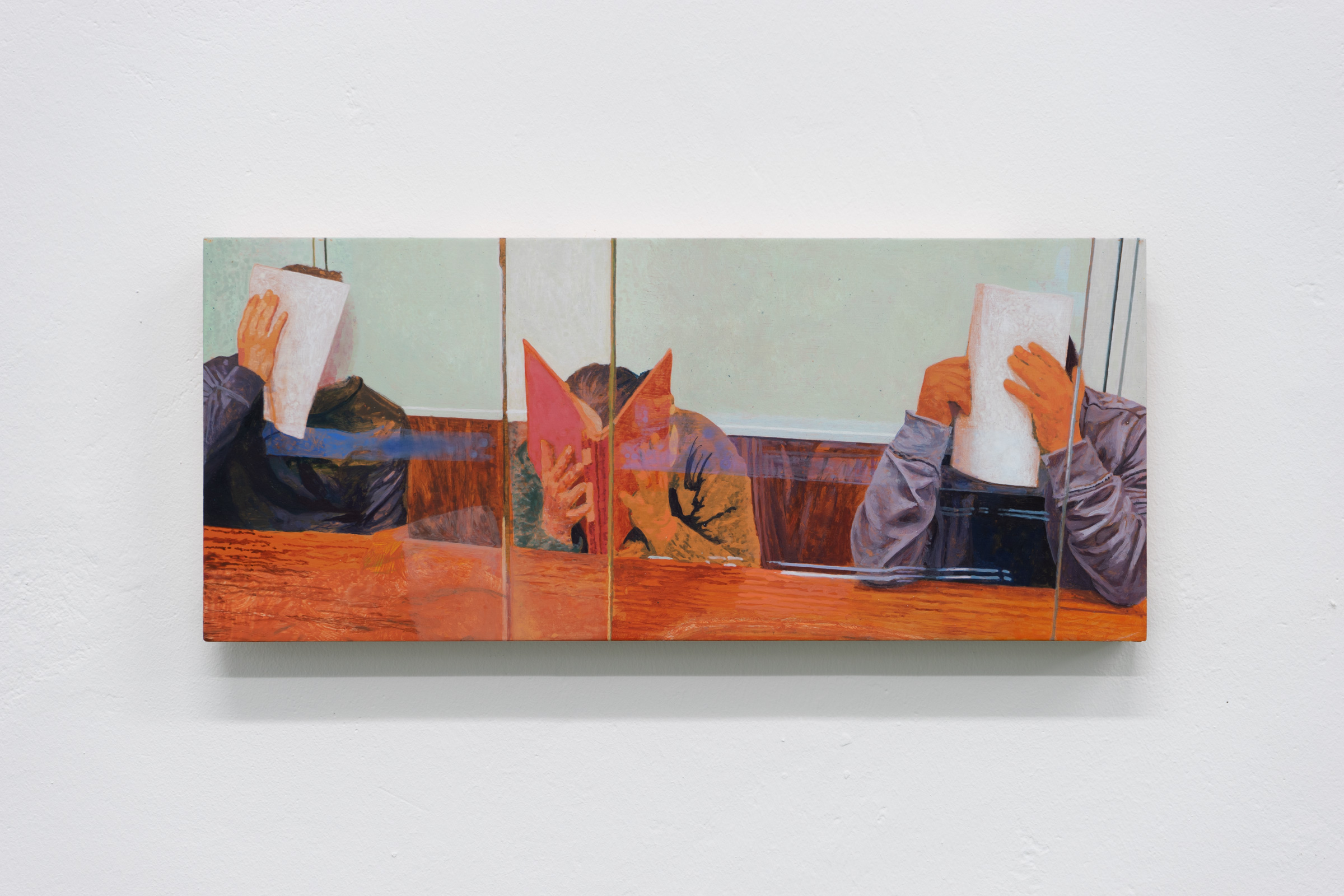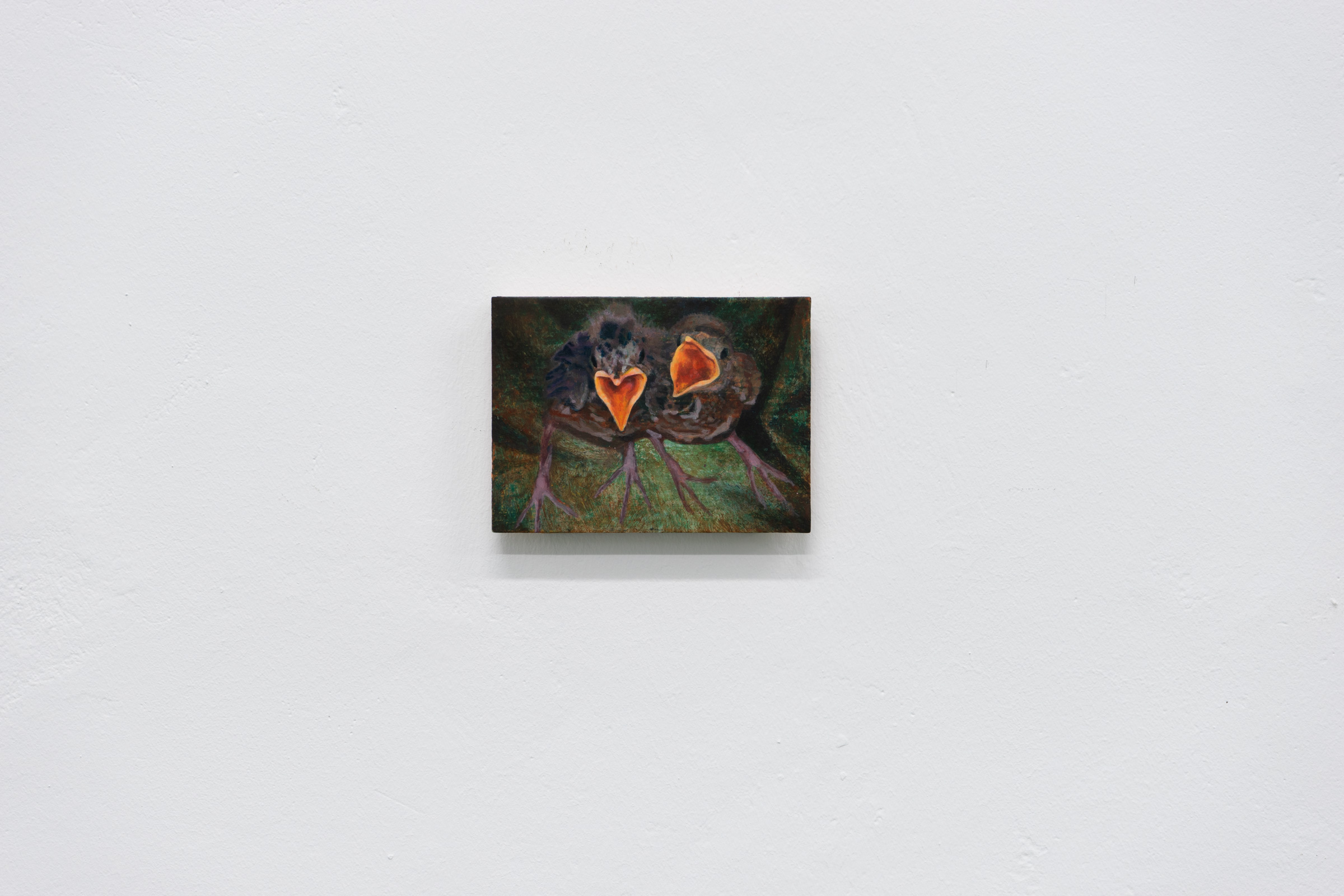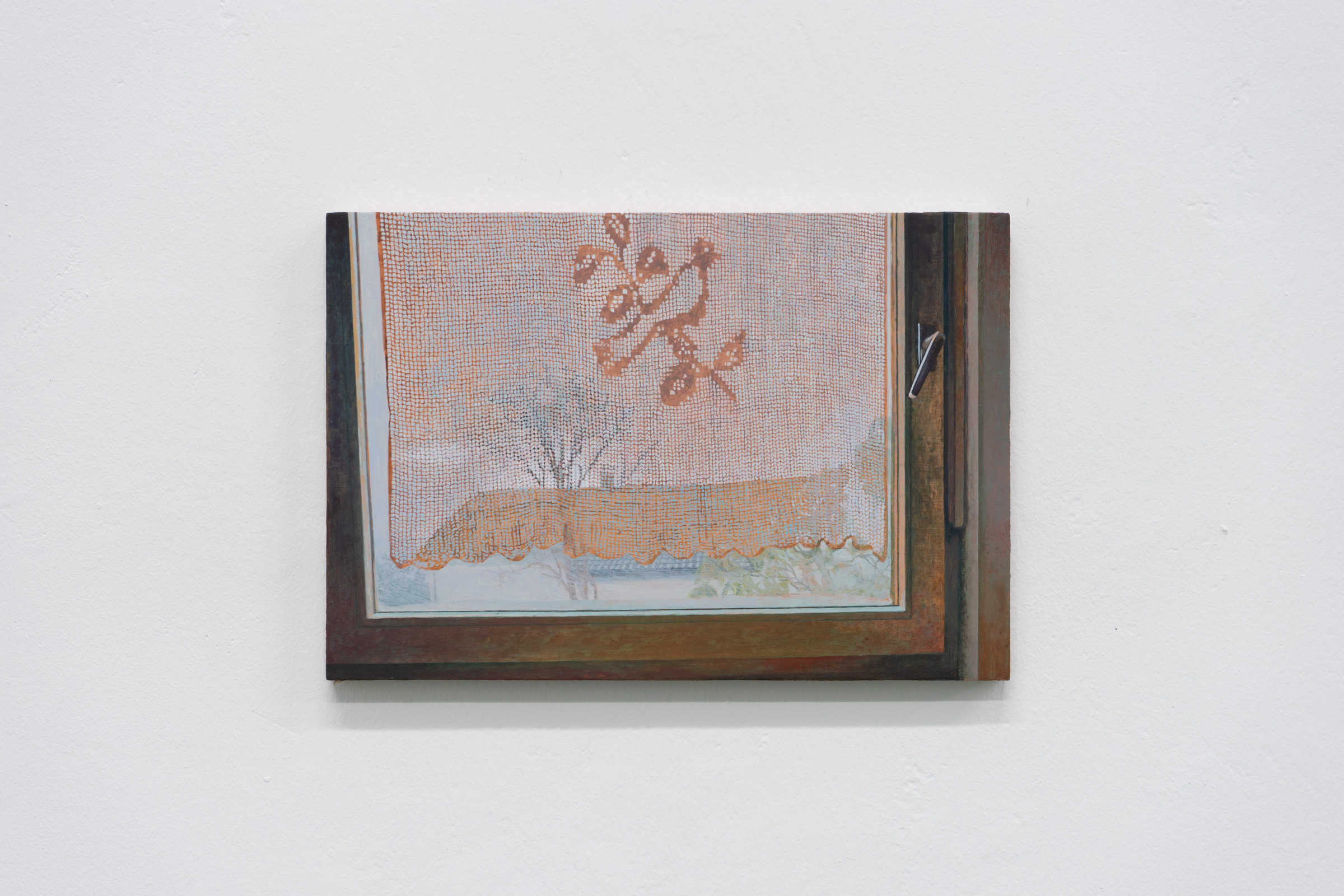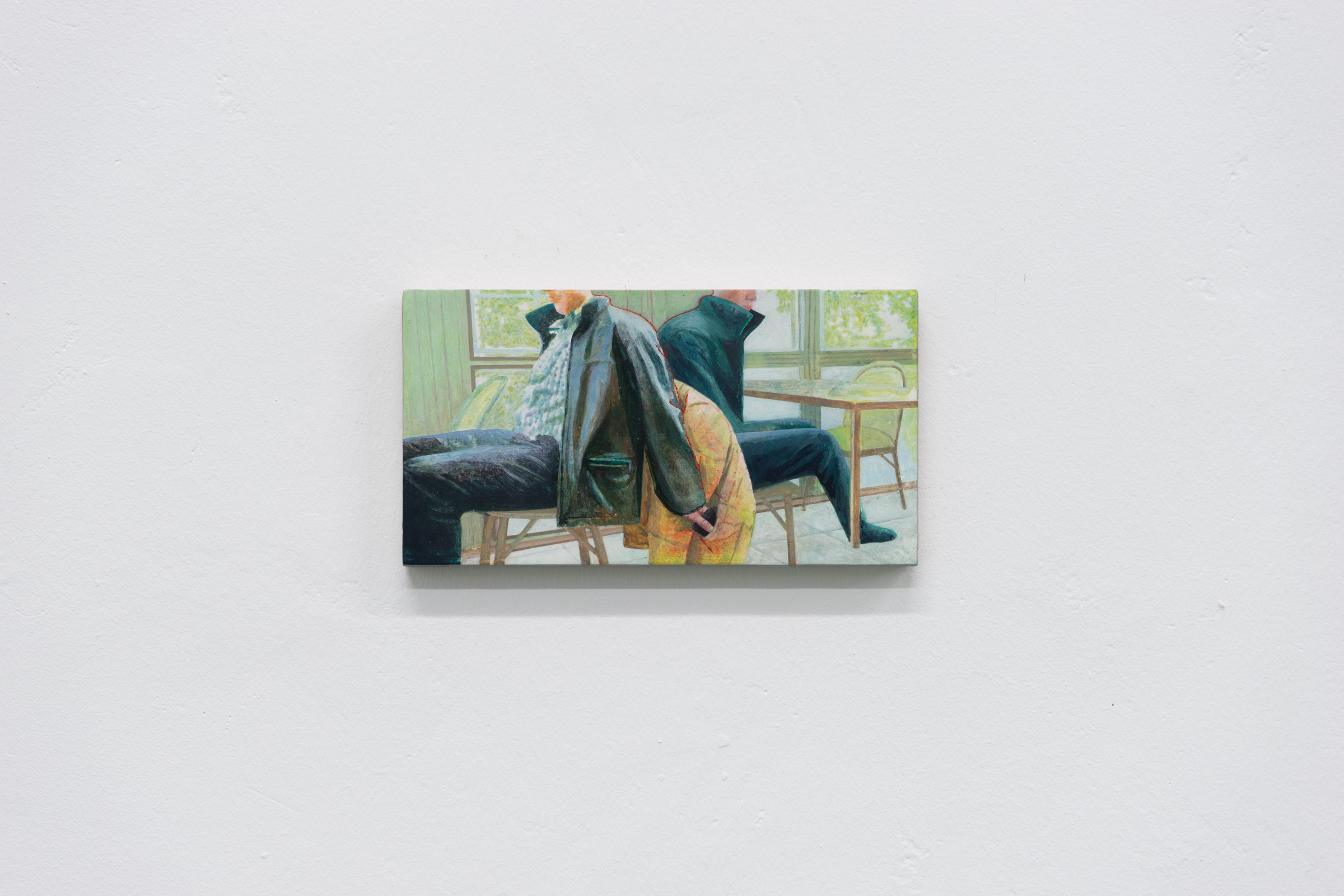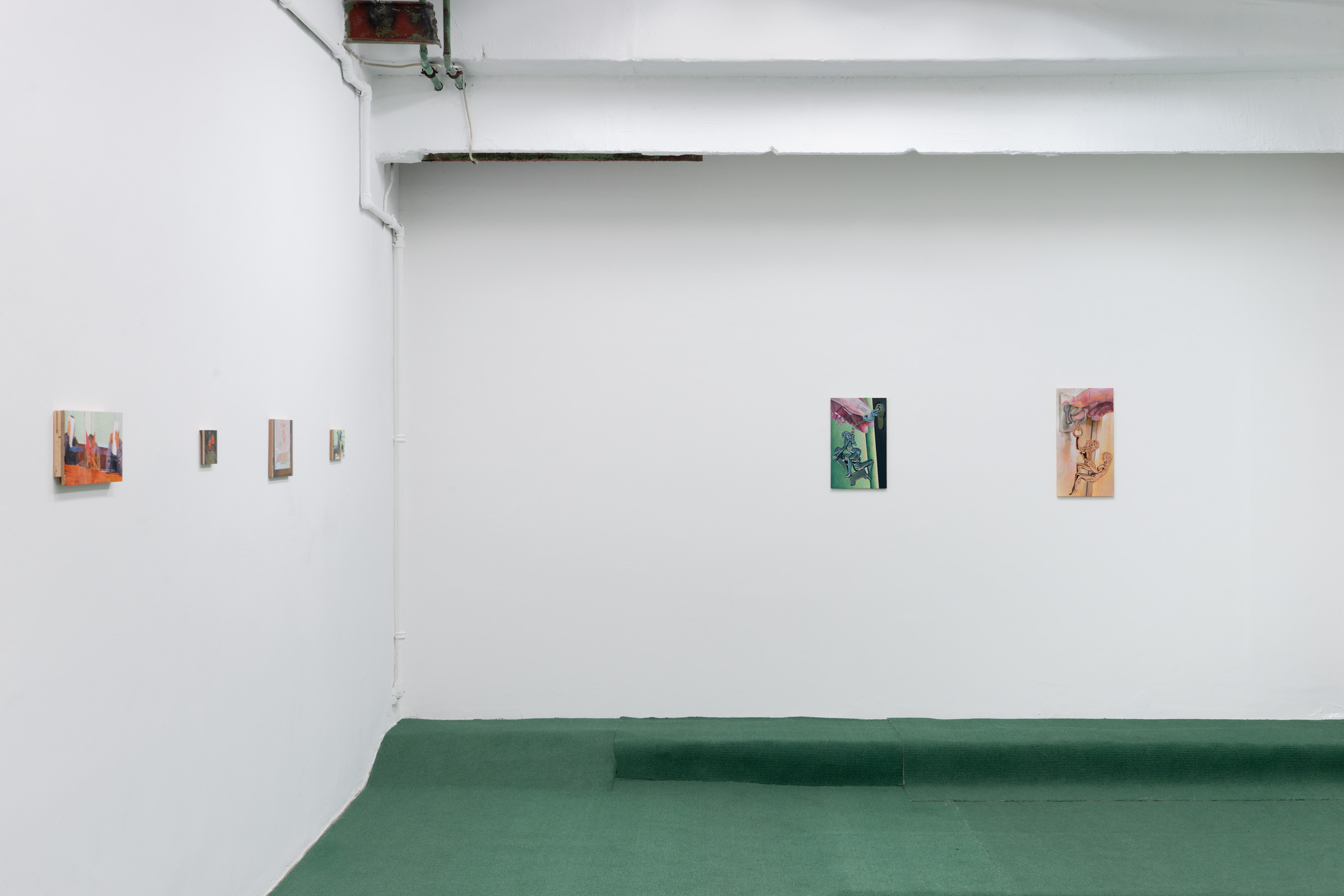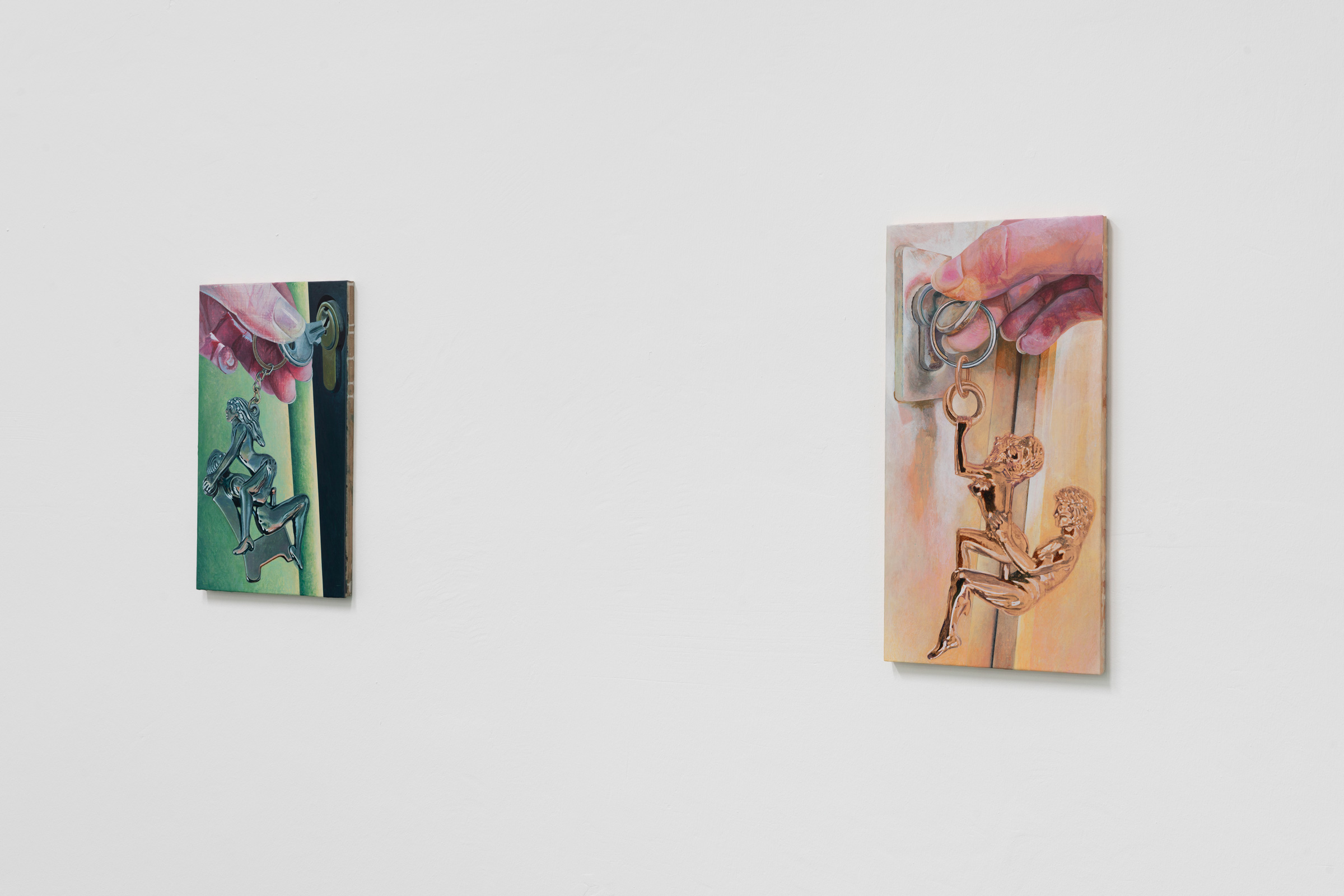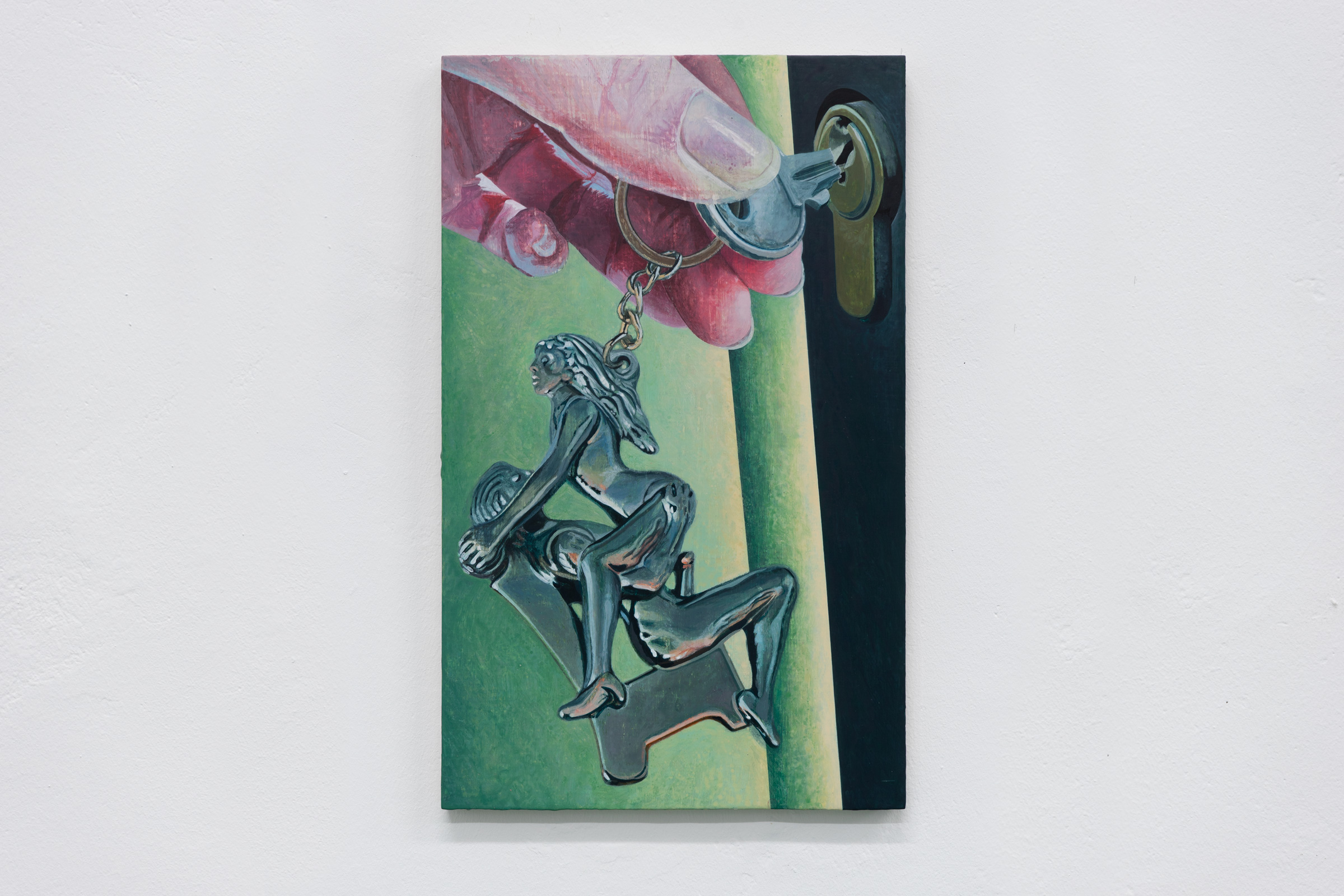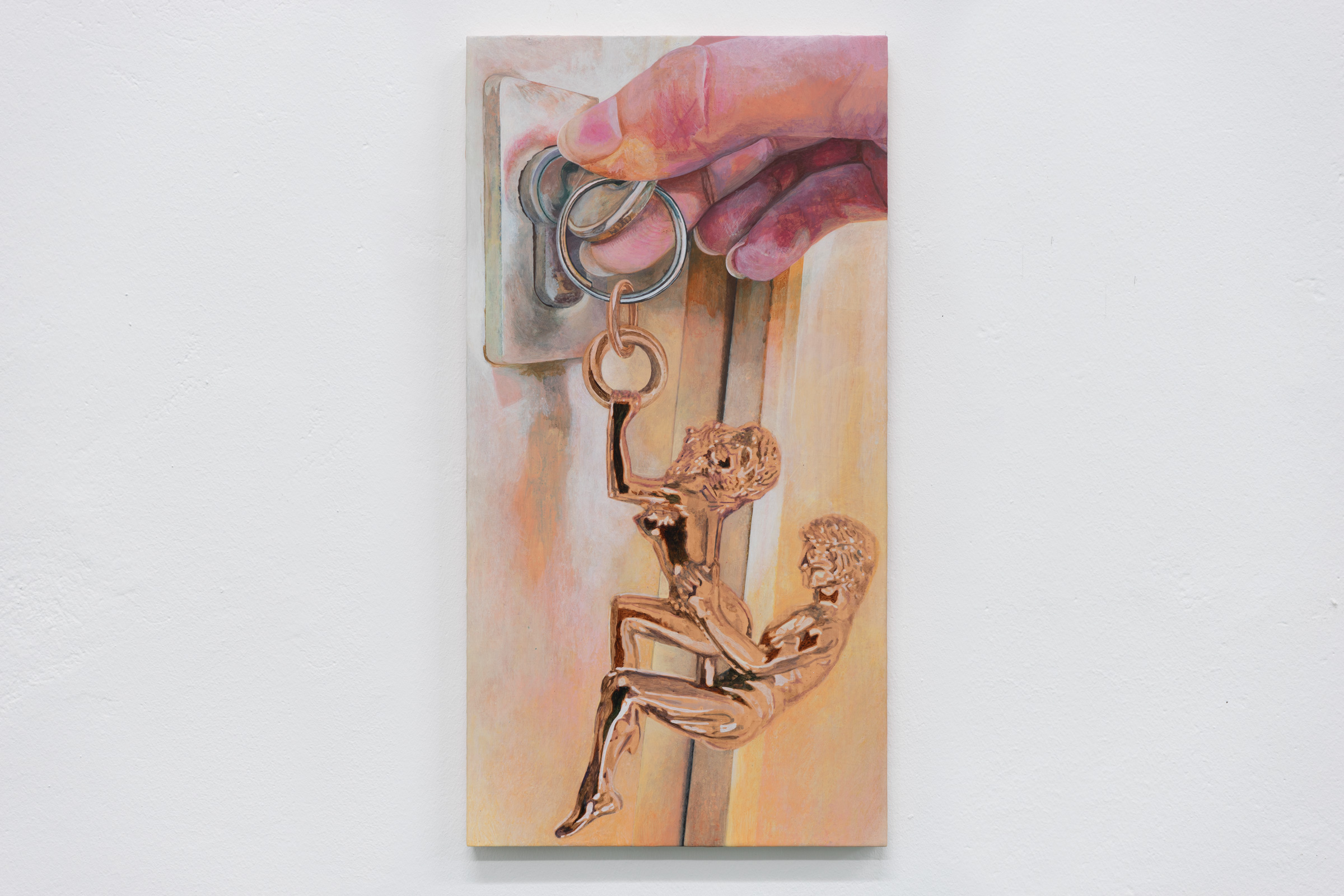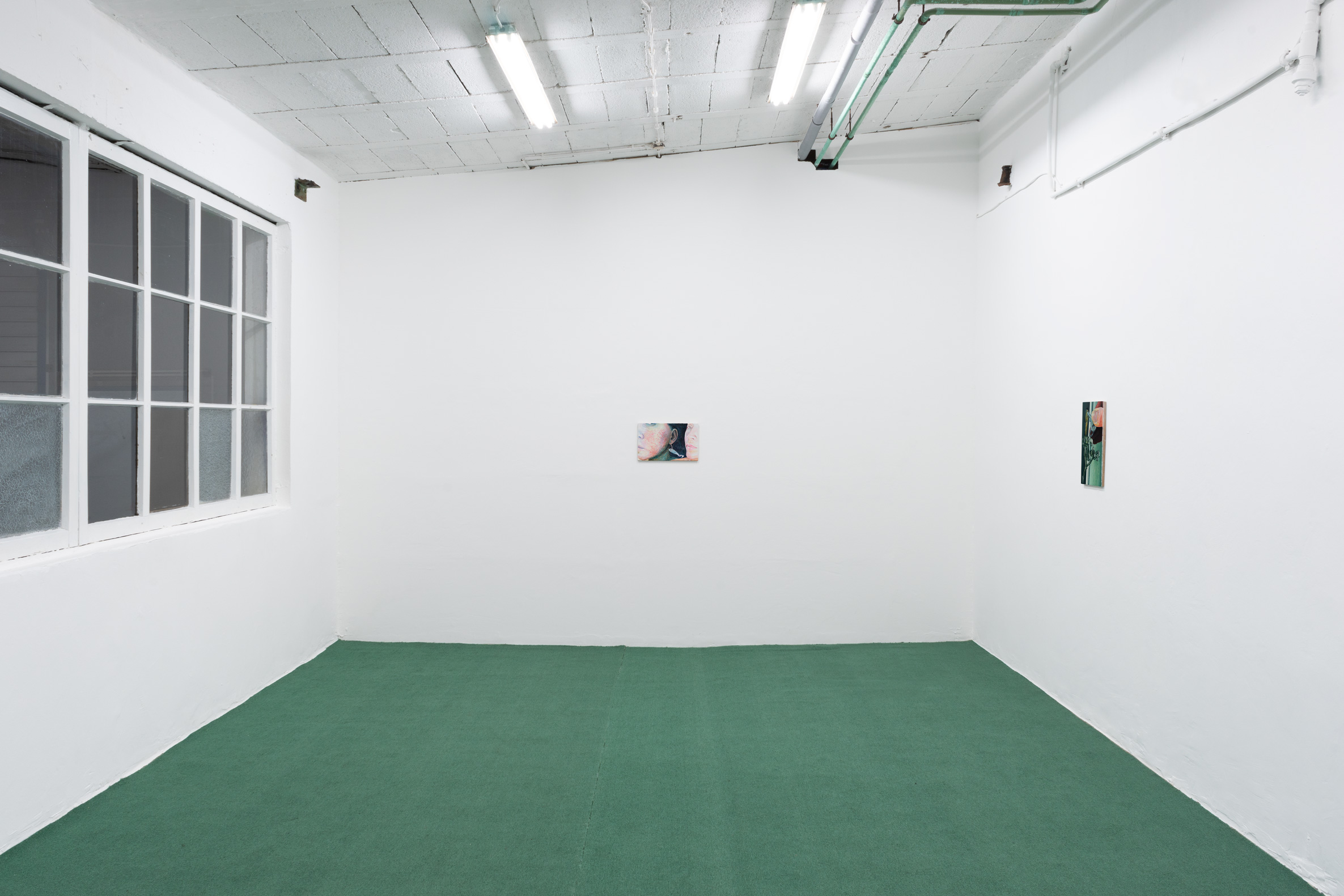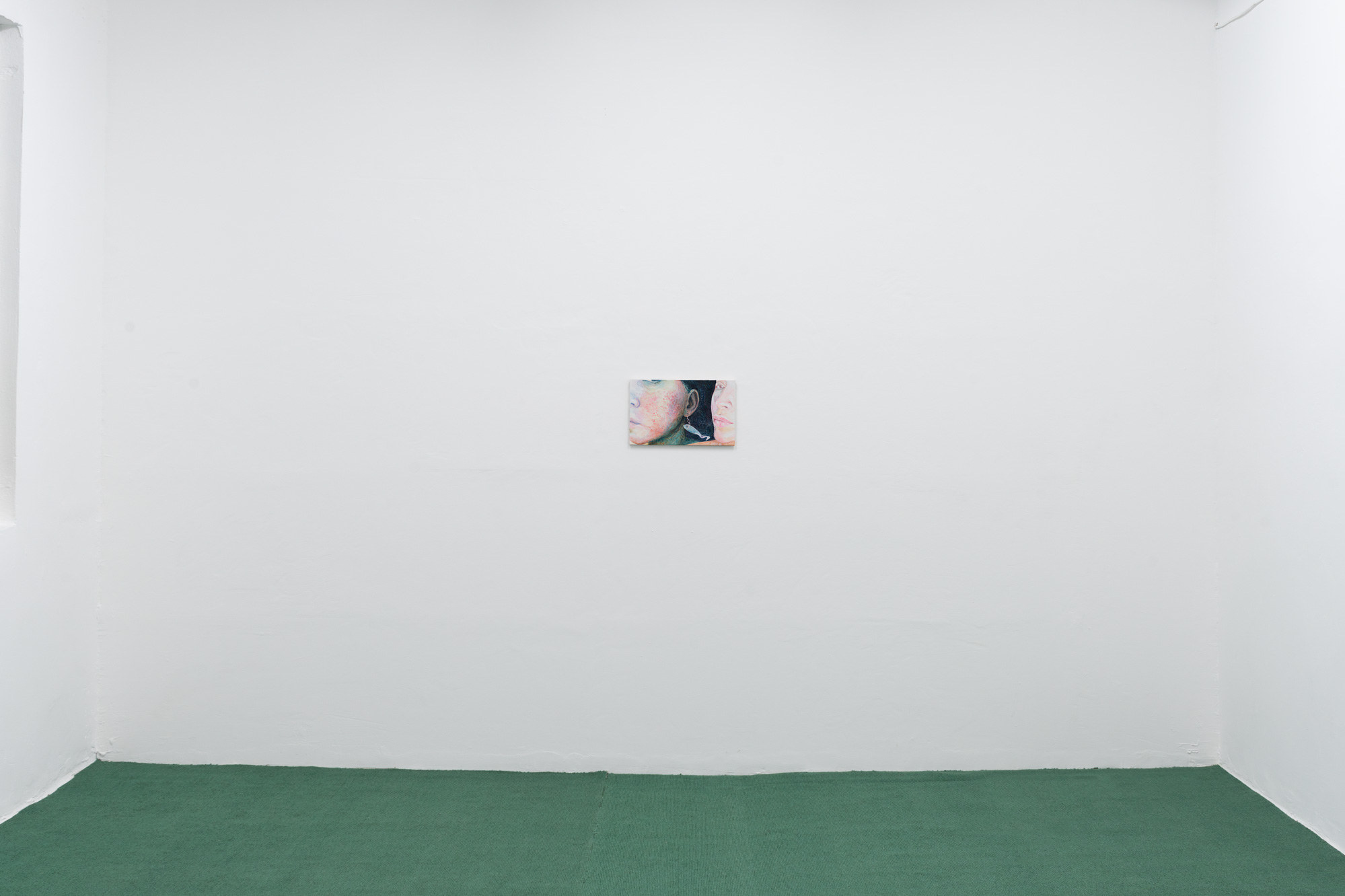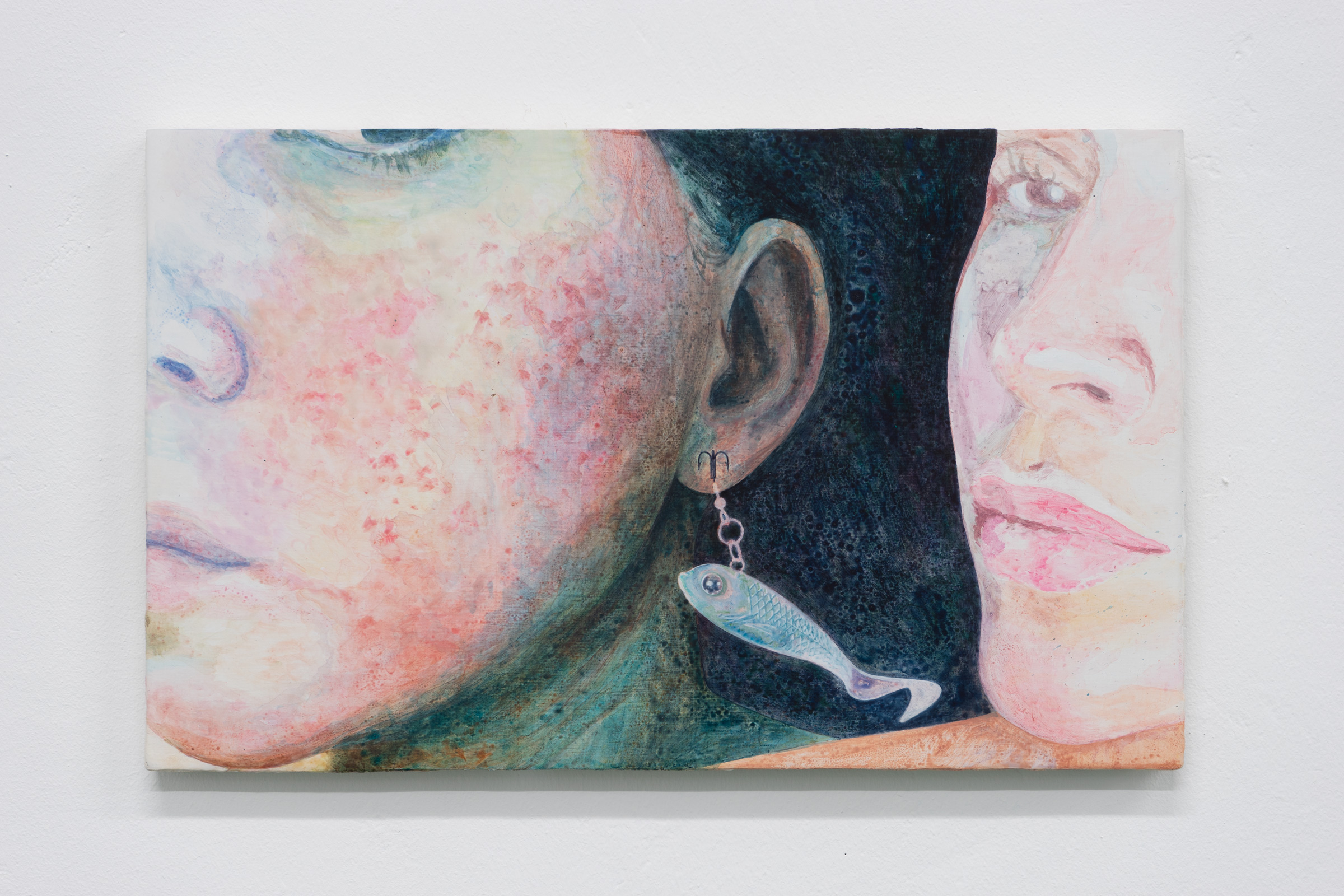Wilde Tiere sind herrenlos, solange sie sich in der Freiheit befinden
Wilde Tiere sind herrenlos, solange sie sich in der Freiheit befinden / rage against the key stimulus
Lin Olschowka
Febuary 04 2023 - March 09 2023
In her exhibition at wieoftnoch, Lin Olschowka presents a new series of paintings on small-format wooden panels. The works show entirely different motifs:
A hand unlocking a door. A pendant in the shape of a couple having sex hangs from the key ring.
Two men sitting in a room with their backs to one another. One reaches from behind into the jacket pocket of the other.
Birds of different species.
Three people in the dock, hiding their faces behind document folders.
The view of a window over which a crocheted curtain hangs. Again, a bird appears in its pattern.
The originals come mostly from Lin Olschowka’s archive of found images. Before she begins to transfer these onto the support for the painting, she applies a chalk base to the wooden panels. This layer gives the acrylic paint a particular texture – it appears soft and waxy, a little like encaustic. Lin Olschowka uses short, precise brushstrokes. Three black strokes indicate the fall of the folds under the defendant’s arm on his brown top. The painting technique, as well as the choice of image motif, is reminiscent of Uwe Lausen. Lin Olschowka’s series as a whole, however, is more restrained. The small panels arranged freely in space have something delicate about them. They are miniatures that do not immediately give away their secret.
The motif of the hand unlocking a door with a sexual key ring is repeated in several paintings. The explicit depictions show what sex is according to the classic definition: One body penetrating another with its extremities. Within the image, this invasive act is duplicated by the key stuck in the lock.
The penetration, the physical overstepping of boundaries, runs as a theme through many of the paintings: the man reaching into the pocket of the other – a theft through sleight-of-hand, the skill and elegance of which is captured by Lin Olschowka’s painting – is one such invasive act. The form of the opened jacket pocket repeats in the gaping beaks of the fledglings in their nest. In a more abstract sense, penetration is also the theme of the painting showing the defendants before the court: The entire architecture of the room is designed to penetrate the perpetrators visually. This regime of the gaze is reinforced here by a pane of glass placed in front of the defendants. It makes the men even more like objects – an instrumentalisation they try to resist by covering their faces.
For Lin Olschowka, it is not about a specific court case. Nor is it about a moral evaluation of the events she portrays in her paintings. Instead, she shifts the focus to the motoric, transitive and physical moment that characterises the crossing of boundaries depicted in the paintings. She is interested in stimuli and how, immediately following their perception, they trigger an instinctive movement that lies beyond the rational. Perhaps the paintings also express amazement at the curiosities that come to light in connection with the fulfilment of needs: The gaping beaks of the young animals trigger the reflex in birds to regurgitate previously swallowed food and feed it to them. In the case of gulls, the red dot on their beaks is believed to entice their offspring to peck instinctively at it, thereby animating the feeding reflex. The dot as a marker: a graphic sign that triggers an action without the need for communication.
Lin Olschowka’s paintings deal with this experience of being in relation to one another, yet they are also about how these processes get stuck. For instance, when the door will not open because you try to unlock it from both sides. Lin Olschowka reproduces this by placing the same motif on two paintings hanging close to each other, with one as a mirror image of the other. This creates a sense of installation already present in her earlier works, such as Kastor und Pollux (2022). There is something significant for the work located not in the picture’s surface but in the space surrounding it. A level of meaning spans between two images, implied but not explicitly described.
As Lin shows me her work in her studio, we talk about the surfaces of the paintings. It becomes clear that we have different assumptions about their texture. To convince me of their smoothness, she invites me to touch the works. At her behest, I give in to a need that often comes over me when looking at art. I perform a violation, duplicating in reality what is narrated in the paintings.
Sebastian Schneider
Translated by Emma Wilson

